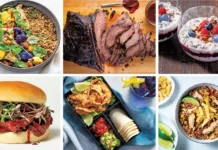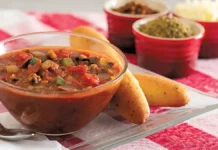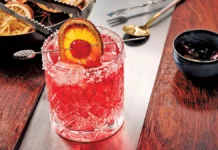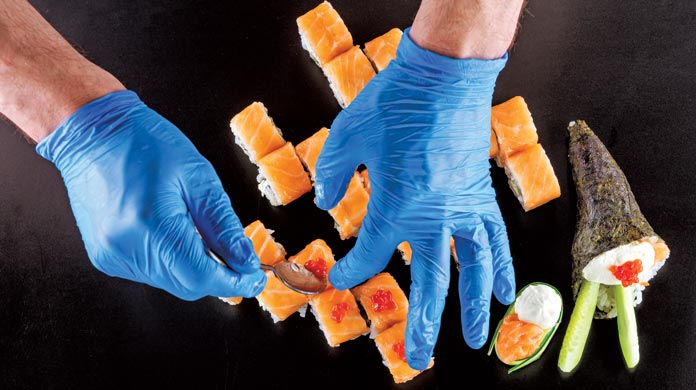
The last two years have put the microscope on health and safety concerns, especially within the foodservice industry. “Clean and Safe” took their place at the head of the proverbial table with “Green and Sustainable” through the duration of the Pandemic.
The industry has begun 2022 seeking to find its definition of the new normal. What is non-negotiable are restaurant patrons’ demands for on-going proper cleanliness standards. This is highlighted by the packaging of their goods in a safe and efficient manner. The marketplace has changed, and restaurants and the distributors that serve them are continually seeking the right partners to help read the market properly.

Dan Grinberg, President and CEO of Elara Brands, fits that bill perfectly. He was an active participant in the glove industry from a young age, having been raised in a family that owned a foodservice glove business. He joined the company, Island Poly, in 1990, and in 1992 was responsible for developing a new brand called FoodHandler. The success of FoodHandler led to the company’s eventual sale to private equity investors. Grinberg would soon start a new company, Elara Brands, to produce gloves, bags, and protective apparel. Elara supplies trusted products and continues to educate its customers on the marketplace’s new cleanliness standards, many of which will become the new norm.
Grinberg’s 31 years within the glove industry have exposed him to the evolution of foodservice sanitation standards. “In 1991, just a year after I joined the business, New York State banned bare hand contact with ready-to-eat foods, which in turn influenced new health codes around the nation. Thirty years later, with Covid, came a renewed focus on restaurant safety,” noted Grinberg. “COVID-19 has brought health and cleanliness concerns to the forefront of customers’ minds. Visible gloves will continue to be more important than ever for guests that are nervous about on-premise dining.”
One of the key obstacles this year has been the challenge of supply chain issues. “The supply chain continues to be a challenge. This not only affects gloves, but a wide range of other imported products operators rely on, from packaging to foodservice equipment,” Grinberg said. “Most disposable gloves are manufactured in Asia and shipped on container vessels to the United States. Ocean freight rates are still very high, which makes products more expensive. Shipping delays out of Asia are also a major problem. For example, China just implemented new COVID-19 lockdowns, forcing shutdowns at major ports such as Shanghai. These lockdowns also disrupt the trucking of raw materials and finished goods to and from factories. Vessels arriving to the U.S. are still facing port congestion. We’ve seen overall transit times increase from 45 days to as long as 90 days. Domestic trucking is another pain-point in the supply chain, with driver shortages and missed pickup and delivery appointments. Elara is spending inordinate amounts of time staying on top of our vendors and freight providers, and we’re increasing our safety stock levels to account for the longer lead times and delays. There is a cost to doing it this way, but we have to keep our customers stocked with these essential items. When will the supply chain normalize? Some logistics experts say the current situation could continue into 2023. That sounds optimistic.”
Restaurateurs and distributors have often mentioned the possibility of the return of domestic manufacturing of gloves to solve the supply chain challenge. “When glove prices surged into the $100s and there were shortages, domestic manufacturing looked compelling. However, as glove prices come back down, higher-cost domestic manufacturing may not be as attractive. Labor is another issue. That said, we could see some new manufacturing that’s backed by large government or private sector contracts. Even so, this would be a small amount relative to imported gloves. Emergency glove reserves, importers maintaining higher safety stock levels, and global sourcing diversification are other approaches to mitigating supply chain risks.”
Both end-user operators and their distributors are trying to make an accurate call on the glove marketplace as they project the accelerated return of customers to their in-restaurant dining facilities. “The glove market is in a ‘correction’ phase right now,” Grinberg observed. “When the pandemic started in 2020, there were severe glove shortages and extreme price increases. For example, gloves made from nitrile were virtually impossible to come by, and prices surged well into the $100s (per case of 1,000 gloves). This started reversing in late 2021. Medical glove demand came down from pandemic highs just as manufacturing capacity started to improve. Some hospitals, distributors, and importers are now overstocked. Lower demand and more supply have prices coming down, though not to pre-pandemic levels. One thing that isn’t changing is the need for glove buyers to be cautious. When nitrile gloves shortages were at their worst, some speculators sought to capitalize by importing gloves labeled as ‘nitrile’ that are made mostly from vinyl. This puts users at risk if they believe they’re getting a true nitrile glove, which provides a much higher level of protection than vinyl. Stick with brands you know and trust.”
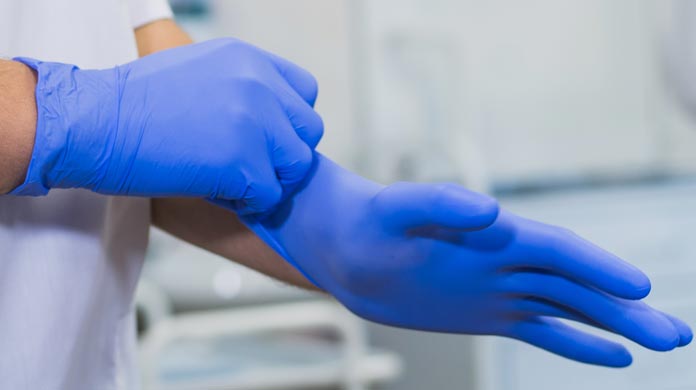 Restaurant and foodservice professionals are also trying to gauge and create their interpretations of ‘clean and safe’. “We’re moving into a new endemic phase, and it appears we’re going to have to live with the virus for some time. Infection rates may ebb and flow, which means safety protocols may have to be fluid as well. While consumers are starting to enjoy dining out again, perceptions around safety have been heightened, and restaurants must continue to make guests feel safe. Potential employees, not just consumers, are paying attention to what operators are doing about safety as well. A cleaner and safer operation has a better chance of hiring hard-to-come-by workers over a lax competitor. With all the focus on COVID-19 protocols, operators must remain vigilant about food safety. A single foodborne illness outbreak can have devastating consequences. Norovirus and Hepatitis A can be a bigger threat to a restaurant than the coronavirus. Training your staff and monitoring food safety protocols are imperative.”
Restaurant and foodservice professionals are also trying to gauge and create their interpretations of ‘clean and safe’. “We’re moving into a new endemic phase, and it appears we’re going to have to live with the virus for some time. Infection rates may ebb and flow, which means safety protocols may have to be fluid as well. While consumers are starting to enjoy dining out again, perceptions around safety have been heightened, and restaurants must continue to make guests feel safe. Potential employees, not just consumers, are paying attention to what operators are doing about safety as well. A cleaner and safer operation has a better chance of hiring hard-to-come-by workers over a lax competitor. With all the focus on COVID-19 protocols, operators must remain vigilant about food safety. A single foodborne illness outbreak can have devastating consequences. Norovirus and Hepatitis A can be a bigger threat to a restaurant than the coronavirus. Training your staff and monitoring food safety protocols are imperative.”
Many operators find themselves confused over the relationship between gloves and the media coverage and politics of mask usage. “Gloves were a priority before masking and will continue to be important even if masks go away for one key reason – food safety.
Masks are used for reducing airborne transmission of the coronavirus. The main reason for glove use in restaurants is to prevent disease transmission from a worker’s hands to food. Most food codes and company protocols prohibit bare-hand contact with ready-to-eat foods. A majority of consumers surveyed well before Covid said they want to see food handlers wearing gloves. Other uses for gloves stemming from Covid are here to stay as well, such as for protecting hands when cleaning, sanitizing, and performing maintenance tasks.”
Grinberg sees a positive result of the increased demand of the past two years. “Whereas glove choices were limited during the peak of the pandemic, operators now have options in pretty much every category – nitrile, latex, vinyl, and polyethylene gloves, and newer blended varieties. This means operators no longer have to settle. For example, some nitrile users were forced to switch to vinyl gloves because of shortages. They found that vinyl was far from ideal, tearing more easily and creating more waste. These users are moving back to nitrile, even though vinyl is less expensive. Other operators switched to less expensive options and are not moving back.
Elara’s digifit glove is made from a stretchable plastic formulation that mimics vinyl gloves. Certain customers switched to digifit when vinyl prices shot up. Even though vinyl prices have declined, digifit is still less expensive and is working great for the customer. What is vital is to understand that with so many different uses for gloves, no single product can do it all. For example, we’re introducing a heavier gauge nitrile glove that will provide added comfort around heat and more durability for meat cutting and tougher cleaning and maintenance tasks. At the other end of the spectrum, there is a new ultra-thin yet strong glove that provides superior touch sensitivity for chefs who would prefer not having to wear gloves at all.”
With his read on the ebb and flow of the marketplace, the Long Island–based glove executive shared his thoughts on best practices for creating a glove strategy. “During the worst of the shortages, distributors did a great job finding substitutes, some of which were not ideal, but there were not many options. That’s changing. Operators can be more selective again and find the glove that balances durability, comfort, and cost. Remember, the cheapest glove is not always the lowest-cost option, especially if it doesn’t hold up to the task. Ask your sales rep for samples so you can try out different types of gloves. Purchase reputable brands from distributors you trust. There are still suspect products in the market. Finally, I can’t stress enough how important it is to train your staff on proper glove use. This starts with handwashing and learning the dos and don’ts of proper glove use. Elara has free training guides and wall charts to help you do this. We have additional innovations coming out this year, so stay tuned,” Grinberg concluded.
For more information about Elara’s products and services, please visit their website or contact your distributor and ask for Elara’s full line of solutions.




















